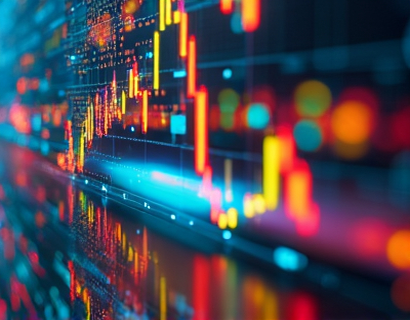Unlocking Artistic Success: Navigating the Digital Landscape for Creatives and Collectors
The digital age has revolutionized the way artists showcase and sell their work, providing unprecedented opportunities for both creators and collectors. This article delves into the intricacies of a pioneering online platform that serves as a bridge between artistic talent and enthusiastic collectors, offering a streamlined and vibrant experience for all involved. By exploring the features and benefits of this innovative marketplace, artists and art lovers can gain valuable insights into how to elevate their artistic journeys and connect with a global community of like-minded individuals.
The Importance of Online Marketplaces for Artists
In the past, artists relied heavily on galleries, exhibitions, and word-of-mouth to reach potential buyers. However, these traditional methods often limited exposure and sales opportunities. The rise of online marketplaces has democratized the art world, allowing artists to showcase their work to a global audience with ease. These platforms provide a level playing field where emerging and established artists can compete on equal footing, based solely on the quality and uniqueness of their art.
For artists, an online presence is no longer a luxury but a necessity. It offers a direct line to collectors, art enthusiasts, and other artists, fostering a community that supports and inspires creativity. The ability to upload high-quality images, detailed descriptions, and even videos of their work enables artists to tell their story and connect with buyers on a deeper level. This personal touch is crucial in building a loyal following and establishing an artist's brand.
Discovering Unique Artworks
One of the primary advantages of these digital marketplaces is the vast array of unique artworks available. From traditional mediums like painting and sculpture to contemporary forms such as digital art and NFTs, the variety is staggering. Collectors can explore different styles, periods, and cultural influences, discovering pieces that resonate with their personal tastes and interests. The search functionality on these platforms is robust, allowing users to filter by medium, price, size, and even the artist's location or style.
For collectors, the ability to find one-of-a-kind pieces is invaluable. Unlike mass-produced art, unique artworks offer a sense of exclusivity and ownership that is hard to replicate. Each piece tells a story, reflecting the artist's vision and craftsmanship. This uniqueness not only adds value to the artwork but also makes the collecting experience more rewarding and personal.
Benefits for Artists
For artists, selling through these platforms offers several key benefits. First and foremost, it provides a wider reach. Artists can showcase their work to a global audience, breaking geographical barriers that traditional methods impose. This increased visibility can lead to more sales and a broader fan base.
Another significant advantage is the reduced reliance on intermediaries. By selling directly to collectors, artists retain a larger portion of the revenue, which is crucial for sustaining their creative endeavors. The platforms typically take a modest commission, making them a cost-effective option compared to traditional galleries that often take a substantial percentage of sales.
These platforms also offer tools and resources to help artists manage their careers more effectively. Features such as sales analytics, customer feedback, and marketing support can help artists refine their strategies and grow their businesses. Additionally, the ability to set prices and manage inventory gives artists more control over their work and pricing strategy.
Creating a Strong Online Presence
To succeed on these digital marketplaces, artists need to create a strong online presence. This starts with high-quality images that accurately represent their work. Well-lit, clear, and professionally shot images can make a significant difference in attracting potential buyers. Artists should also provide detailed descriptions of their pieces, including the materials used, dimensions, and inspiration behind the work. This information helps collectors understand the value and uniqueness of the artwork.
Engagement is key on these platforms. Artists should actively participate in the community by responding to comments, participating in discussions, and sharing their creative process. This interaction builds a loyal following and can lead to word-of-mouth recommendations, which are invaluable in the art world.
Market Trends and Opportunities
The digital art market is rapidly evolving, with new trends and opportunities emerging regularly. One of the most notable trends is the rise of NFTs (Non-Fungible Tokens), which have opened up new avenues for artists to monetize their digital creations. NFTs provide a way to authenticate and sell digital art, ensuring ownership and scarcity. This has attracted a new demographic of collectors who are interested in the intersection of art and technology.
Another trend is the increasing popularity of virtual exhibitions and online art fairs. These events allow artists to showcase their work in immersive digital environments, reaching audiences who might not have access to physical galleries. Virtual reality and augmented reality technologies are also being integrated into these platforms, offering innovative ways to experience art.
For artists, staying informed about these trends and adapting to new technologies can provide a competitive edge. Participating in online workshops, webinars, and community forums can help artists stay ahead of the curve and explore new creative possibilities.
Building a Sustainable Art Career
While the allure of selling art online is undeniable, building a sustainable art career requires dedication and strategic planning. Artists should set clear goals and develop a business plan that outlines their marketing strategies, pricing, and sales targets. Consistency is key; regular uploads of new work and active engagement with the community can help maintain visibility and attract repeat buyers.
Collaboration with other artists and participating in group exhibitions can also expand an artist's reach. These collaborations can lead to cross-promotion and new opportunities, enriching the artistic journey. Networking within the online community can open doors to partnerships, commissions, and even teaching opportunities.
Conclusion
The digital marketplace for art has transformed the way artists and collectors interact, offering a dynamic and accessible platform for showcasing and selling unique artworks. By leveraging the features and benefits of these platforms, artists can expand their reach, build a loyal following, and sustain their creative careers. For collectors, the opportunity to discover and own unique pieces from around the world is more accessible than ever. As the art world continues to evolve, embracing these digital tools and communities will be essential for anyone looking to make a mark in the artistic landscape.











































